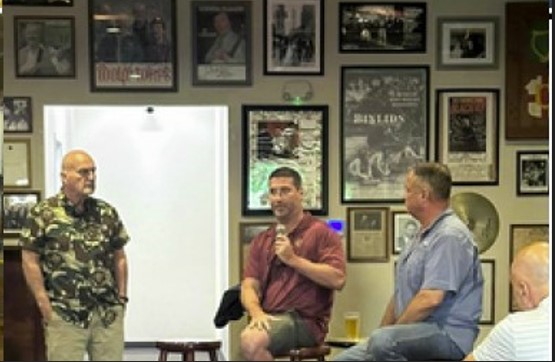Security Measures and Investigative Techniques in the Aftermath of Security Failures
Discover key insights on security measures and investigative techniques following an assassination attempt, shared by Josh Goldberg at a FALI panel. Learn about forensic analysis, geospatial intelligence, and best practices for safeguarding high-profile events.


Introduction
In the wake of an attempt on the life of a former president, the security and investigative sectors have come under intense scrutiny. At the recent Florida Association of Licensed Investigators (FALI) meeting in Tampa, a panel discussion highlighted critical insights into how such events should be managed. The focus was on the attempted assassination of former President Donald Trump. Among the speakers, Josh Goldberg, a security and investigations expert from Insight Investigative Group, LLC, offered an in-depth look at the investigative techniques, security protocols, and innovative use of geospatial and open-source intelligence in the aftermath of such incidents.
The Setting and the Expert
Josh Goldberg’s investigative background provided a sharp perspective on the security lapses and investigative missteps during the assassination attempt. His participation in the panel was more than a theoretical exercise—it was a chance to evaluate real-world scenarios and propose practical solutions.
Key Investigative Techniques Following the Attack
Goldberg stressed the importance of immediate action. "The first hours following an assassination attempt are crucial," he stated. Key areas of focus during the panel included:
Forensic Analysis: The rapid collection of evidence, from gunshot residue to bullet trajectory analysis. Traditional forensic science must be combined with digital forensics to trace the assailant's online activity leading up to the event.
Witness Interviews: Conducting interviews using psychological profiling to assess the credibility of witness statements. Goldberg emphasized the importance of gathering information while it's still fresh in witnesses' minds.
Scene Preservation: Ensuring the crime scene remains as undisturbed as possible, with strict access control and detailed documentation of any changes.
Security Protocols for High-Risk Events
Preventive measures were another focus of the discussion:
Pre-Rally Reconnaissance: Goldberg introduced the use of geospatial intelligence—satellite imagery, drone surveillance, and mapping—to identify potential sniper locations, escape routes, and hidden dangers around the event site.
Open-Source Intelligence (OSINT): Leveraging social media, public records, and online platforms to screen attendees, identify potential threats, and monitor online chatter. Given the role of the internet in modern threats, this is a crucial tool for early detection.
Physical Security Enhancements: Strengthening physical barriers, improving crowd control, and deploying highly trained security personnel with expertise not only in combat but also in early threat recognition.
Best Practices for Security Officials
Goldberg shared valuable insights on best practices for security teams:
Training and Simulation: Regular training exercises simulating real threats help ensure that security personnel are prepared and able to respond instinctively under pressure.
Technology Integration: Employing AI for real-time threat analysis, facial recognition for rapid identification, and predictive analytics to anticipate potential breaches.
Communication and Coordination: Establishing seamless communication between local law enforcement and federal agencies ensures that all layers of security are informed and ready to respond.
Conclusion
The panel discussion, enriched by experts like Josh Goldberg, highlighted the urgent need for an evolved approach to security in high-profile situations. The attempted assassination of former President Trump exposed vulnerabilities in current systems. By combining advanced technology with traditional investigative techniques, the security community can hope to stay ahead of potential threats. Goldberg’s contributions were more than just theoretical—they were a direct call to action, urging security professionals to adapt, innovate, and be ever vigilant in the face of evolving challenges.
Call to Action
For businesses and security professionals, the insights shared by Goldberg offer a roadmap for improving security practices. Engaging with experts like Josh Goldberg—either through forums like FALI or directly through Insight Investigative Group, LLC—provides not just knowledge but a strategic advantage in safeguarding against modern threats.
This article is not just a summary; it's a call for security professionals to take action, to ensure that future incidents become lessons learned, rather than repeated mistakes.


